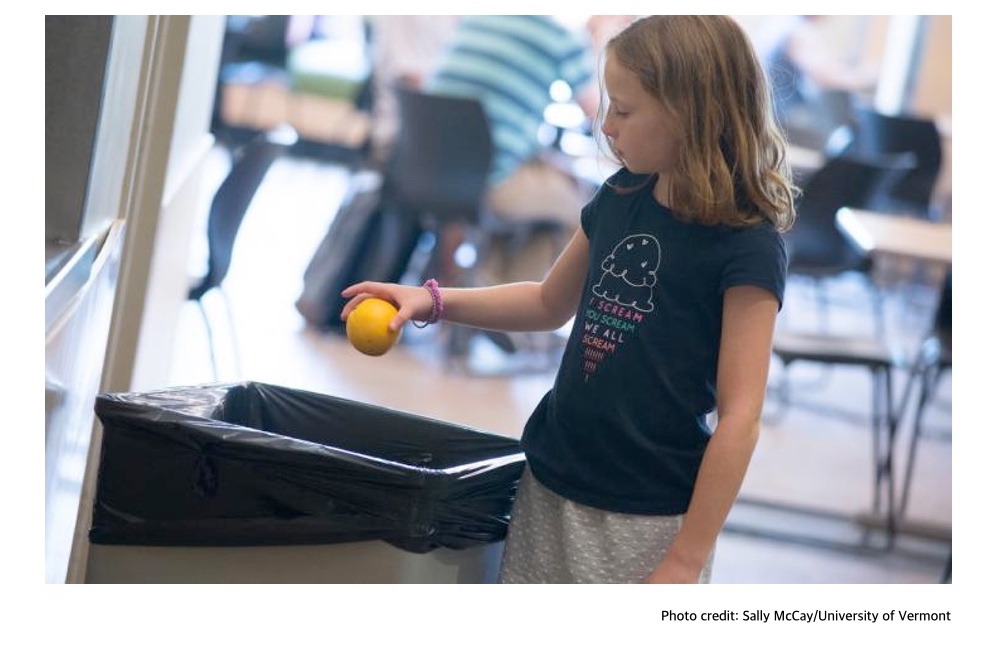You can lead a kid to fruits and vegetables, but you can’t make them eat. Government regulations in the United States that require school kids to put produce on their plates have met with strong opposition in cafeterias around the country.
Researchers took photos of students’ lunch trays at the cashier and again at the food disposal area where they caught on camera kids in the act of throwing away the fruits and vegetables they were required to put on their trays.
“…[D]oes requiring a child to select a fruit or vegetable actually correspond with consumption. The answer was clearly no. It was heartbreaking to see so many students toss fruits like apples into the trash right after exiting the lunch line,” Sarah Amin, a researcher at the University of Vermont and lead author of the study, said in a statement.Kids who began kindergarten in 2012 under the new USDA guidelines will never know whole fruits and vegetables weren’t always a part of school lunch, so perhaps the problem will begin to correct itself in time.
What they found is that after the Act kids put more fruits and vegetables on their lunch trays, as required, but they ate very little of them. Instead, they tossed them, and food waste at the schools increased by 56 percent.
In an earlier study, Amin and her colleagues reported that students preferred processed fruits and vegetables like tomato paste on pizza or fruit juice.
It may take awhile before students begin to eat the fruits and vegetables they are given with school lunch and the food waste stops. Kids who began kindergarten in 2012 under the new USDA guidelines will never know whole fruits and vegetables weren’t always a part of school lunch, so perhaps the problem will begin to correct itself in time.
Amin and her colleagues offer these suggestions to increase consumption of fruits and vegetables:
- •Cut up vegetables and serve them with dip or mix them in with other parts of the meal.
- •Slice fruits like oranges or apples, rather than serving them whole.
- •Adopt promising such as Farm-to-School programs and school gardens, which can raise fruit and vegetable consumption in addition to what the cafeteria is providing.
- •Encourage fruit and vegetable consumption in the home, which could carry over to school.
The study is published in Public Health Reports.





